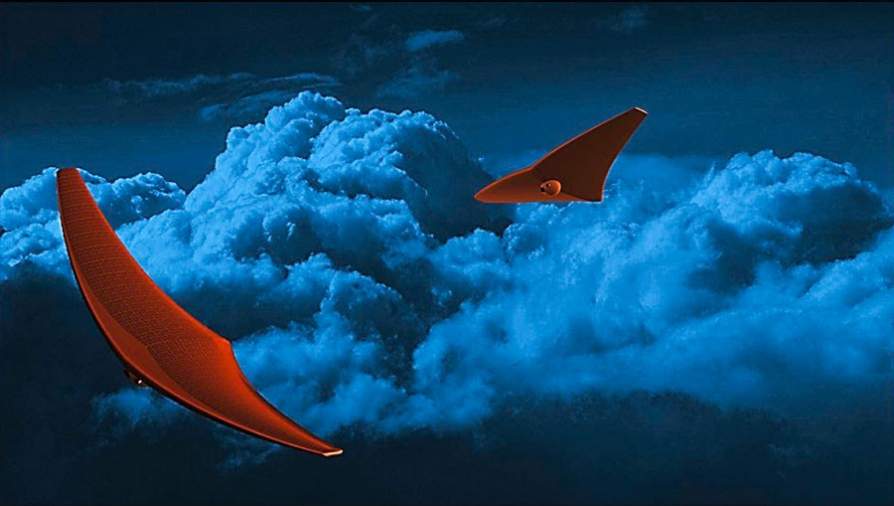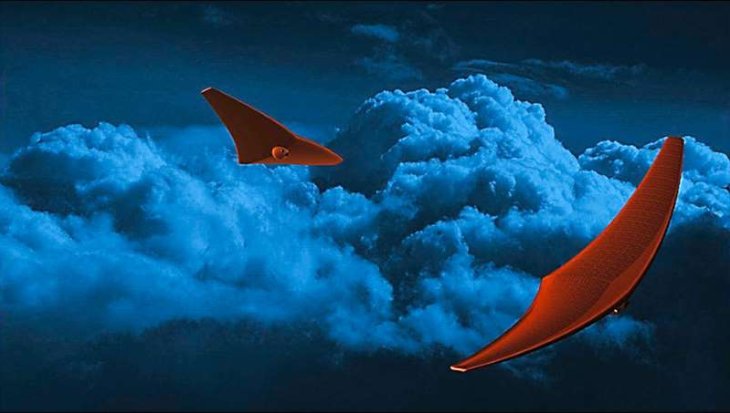This Stingray-Shaped Spacecraft Is Perfect For Exploring Venus
Aadhya Khatri - Nov 15, 2019

The spacecraft will travel in the upper atmosphere of Venus while using the high winds and allow the team to have control over where they go
- Russia Will Build A Lunar Space Station With China Because It's Done With NASA
- NASA Reveals 20 Most Stunning Earth Images Taken From The ISS
- Indian-Origin NASA Researcher Discovers Jupiter Moon Europa Glows In The Dark
Venus has always been a challenge to explore and to deal with what the planet can throw at us, experts at the University of Buffalo have come up with a design for a stingray-shaped spacecraft.
The project, along with 11 others, was chosen by NASA as part of its NIAC (Innovative Advanced Concepts) program, which provides support for innovative and new technologies.

The spacecraft will fly partly by flapping its wings, which look and operate like the pectoral fins of stingrays. They will travel in the upper atmosphere of Venus while making use of the high winds and allow the team to have control over where they go.
According to Javid Bayandor, the lead investigator of the project and an associate professor at the University of Buffalo, the team took the inspiration from nature, and in this particular case, the stingrays. The design can allow for a high level of control of spacecraft operating in an area with strong wind on Venus.
Once the craft is sent to the planet, it will make a trip around the planet every four to five days. They run on solar energy that is topped up when the craft is on the parts of the planet that are lit by the Sun.
What the stingray-shaped spacecraft will so on our neighboring planet is to use their onboard instruments to gather data on the volcanic activities, weather patterns, and collecting samples of Venus’s atmosphere.
Venus rotates really slowly around the Sun, so a day on the planet is longer than a year on Earth. This is why it has a dark side that faces away from the Sun for a very long time.
The stingray-shaped spacecraft will be ideal for exploring the dark side of Venus as it is powered by solar power, which the craft can collect when they are on the lit side.
Venus’s surface is an extremely dangerous place for even a robotic spacecraft, but not for these craft with wings. Their design allows for an internal tension system, letting the operators adjust the mechanical compression, thrust, and lift to better fit the hostile environment of the planet.
Featured Stories

Features - Jul 01, 2025
What Are The Fastest Passenger Vehicles Ever Created?

Features - Jun 25, 2025
Japan Hydrogen Breakthrough: Scientists Crack the Clean Energy Code with...

ICT News - Jun 25, 2025
AI Intimidation Tactics: CEOs Turn Flawed Technology Into Employee Fear Machine

Review - Jun 25, 2025
Windows 11 Problems: Is Microsoft's "Best" OS Actually Getting Worse?

Features - Jun 22, 2025
Telegram Founder Pavel Durov Plans to Split $14 Billion Fortune Among 106 Children

ICT News - Jun 22, 2025
Neuralink Telepathy Chip Enables Quadriplegic Rob Greiner to Control Games with...

Features - Jun 21, 2025
This Over $100 Bottle Has Nothing But Fresh Air Inside

Features - Jun 18, 2025
Best Mobile VPN Apps for Gaming 2025: Complete Guide

Features - Jun 18, 2025
A Math Formula Tells Us How Long Everything Will Live

Features - Jun 16, 2025
Comments
Sort by Newest | Popular